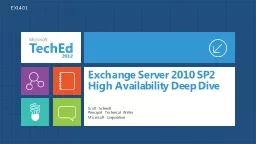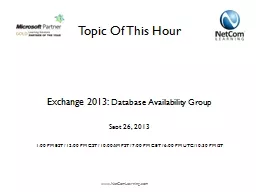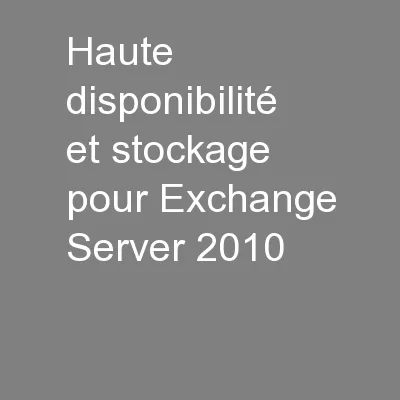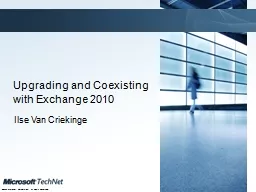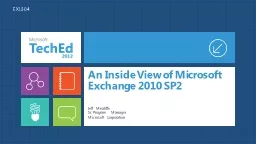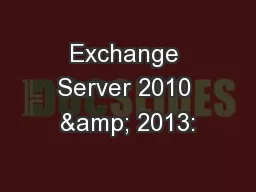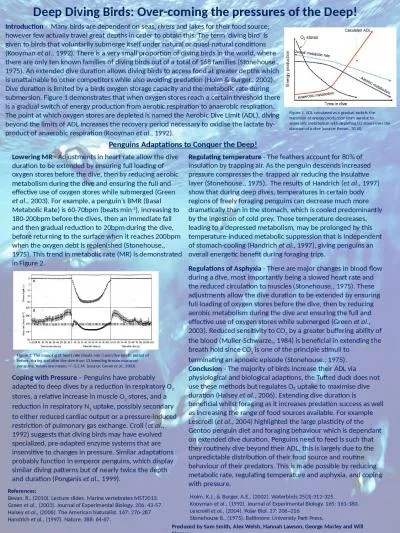PPT-Exchange Server 2010 SP2 High Availability Deep Dive
Author : natalia-silvester | Published Date : 2016-03-26
Scott Schnoll Principal Technical Writer Microsoft Corporation EXL401 Agenda Recent Behavior Changes SP2 UR3 Database Availability Group Networks Active Manager
Presentation Embed Code
Download Presentation
Download Presentation The PPT/PDF document "Exchange Server 2010 SP2 High Availabili..." is the property of its rightful owner. Permission is granted to download and print the materials on this website for personal, non-commercial use only, and to display it on your personal computer provided you do not modify the materials and that you retain all copyright notices contained in the materials. By downloading content from our website, you accept the terms of this agreement.
Exchange Server 2010 SP2 High Availability Deep Dive: Transcript
Download Rules Of Document
"Exchange Server 2010 SP2 High Availability Deep Dive"The content belongs to its owner. You may download and print it for personal use, without modification, and keep all copyright notices. By downloading, you agree to these terms.
Related Documents

